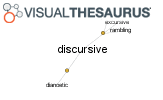Everything You Need to Know About Irish Whiskey
Geege Schuman stashed this in Alcohol
Stashed in: Words!, Alcohol!, Whiskey!, St Patrick's Day
Step One: Know The History
There’s a reason we all grew up watching our fathers and grandfathers drink Scotch and not Irish whiskey. Essentially the luck of the Irish hasn’t been so great from a whiskey perspective. The industry has had one setback after another—beginning with the Irish Temperance Movement of the 1830s. “On April 10th, 1838 a capuchin friar, Fr. Theobald Matthew, turned people against what he perceived as the ‘demon drink,’” says Danny Fagan, Brand Director for Castle Brands’ Irish Portfolio, which produces Clontarf and Knappogue Castle Whiskey. “In just five years, over 5 million people of a population of 8 million Irish citizens had taken what was called ‘the pledge.’” The direct result of “the pledge” was 20 of Ireland’s best distilleries closing their doors.
About the time things were starting to get going again, the Irish War of Independence happened, once again stopping production. Then, just a decade later, the Economic Trade War with the British further hobbled the just-recovering industry. So when thousands of Americans arrived in Europe to fight Hitler, “the only kind of whiskey you could get was Scotch whiskey,” says Stuart McNamara, the Dublin-based whiskey writer behind IrishWhiskey.com. “The soldiers learned to drink Scotch whiskey and brought it back to the states with them.”
So Irish Whiskey was in short supply and that's why so many people drink Scotch?
Which one is whiskey and which is whisky?
Simpler explanation than I thought: Country of origin.
The difference between whiskey and whisky is simple but important: whisky usually denotes Scotch whisky and Scotch-inspired liquors, and whiskey denotes the Irish and American liquors.











3:46 PM Mar 17 2015